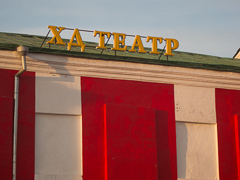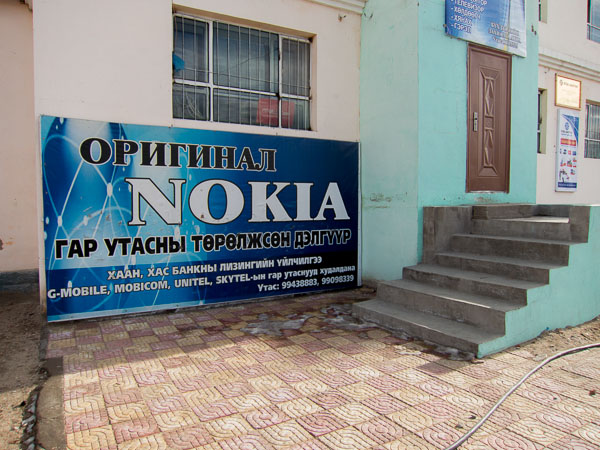Transliteration

Although I have read about the coping mechanisms of the illiterate, it is only recently that I have had to put them into practice. I find it much easier to return to the same vendors who, because I could see what kind of vegetables they were selling or could use a word that was understood, left me with the positive memory of shopping success. They always remember what I was looking for when I return. I find it much easier to shop where there are packages with pictures on them, though some of these pictures have been confusing. (Does that picture of the blond-haired girl holding wheat mean that there is flour inside, or is that just a logo for a Russian grocery company?) When venturing out of things I know, I try to stick to things whose price is marked or can be guessed so that I don't have to ask—not only do I not know what to ask about, I don't even know how to ask. I remain curious about the bottles underneath the wine in Nomens, with very long roots in them. The only thing I understand from the label is that it is made in Mongolia and that it contains 39% alcohol.
While we have a Mongolian tutor and are making some progress, it is slow. In practically every sense, we are in the same position as our students, and use the same excuses that they do when we have not memorized our vocabulary or written our Mongolian script. One bright spot is the accidental progress we are making by simply learning the sounds of the alphabet. In this way we are discovering the wealth of words that have been borrowed from English and transliterated to Mongolian. (Present day Mongolian is transliterated into Cyrillic from a previous script, which itself was a Tibetan transliteration of an earlier Mongolian oral language.) So by learning a few of the differences between the functions of similar letters in the two alphabets, you can “read” many Mongolian words. Although we are still hopelessly lost on real Mongolian words, we have discovered the answers to these little puzzles. You can solve them by knowing this handy code—(English=Mongolian) :
- r=p
- n=h
- e=и
- y=о
- s=c
- f=ф
- l=л
- p=п
